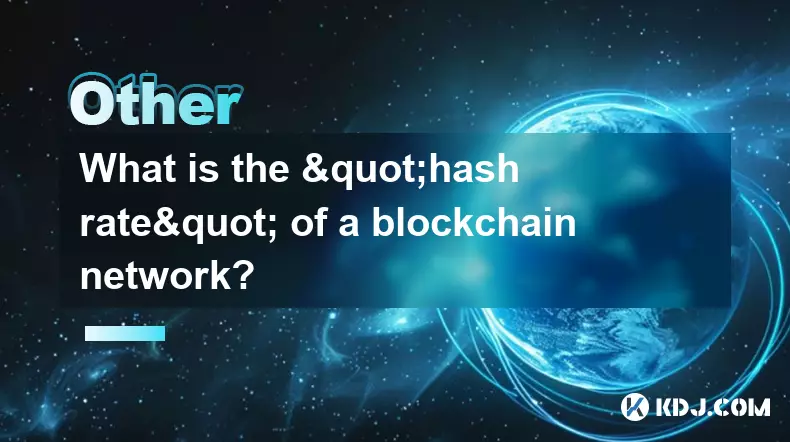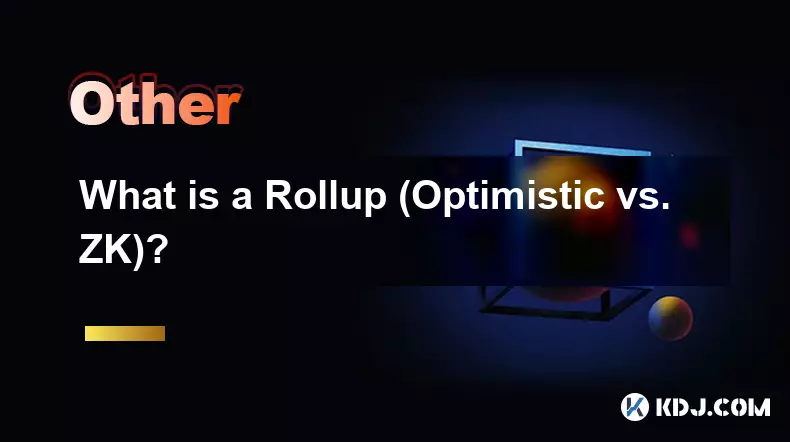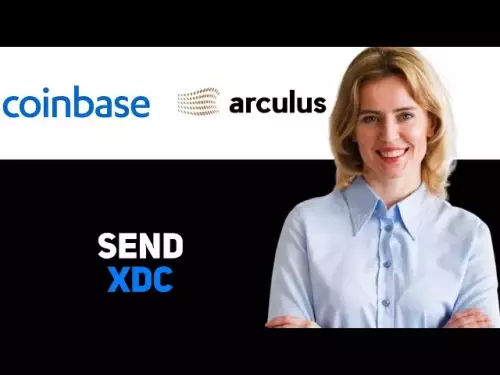-
 bitcoin
bitcoin $111375.742210 USD
-8.60% -
 ethereum
ethereum $3780.311592 USD
-13.98% -
 tether
tether $1.001299 USD
0.07% -
 bnb
bnb $1093.375857 USD
-13.01% -
 xrp
xrp $2.339375 USD
-16.91% -
 solana
solana $185.029017 USD
-16.69% -
 usd-coin
usd-coin $1.000230 USD
0.04% -
 tron
tron $0.319531 USD
-5.16% -
 dogecoin
dogecoin $0.190791 USD
-23.59% -
 cardano
cardano $0.638663 USD
-21.82% -
 ethena-usde
ethena-usde $0.998483 USD
-0.20% -
 hyperliquid
hyperliquid $37.741486 USD
-14.68% -
 chainlink
chainlink $17.229851 USD
-22.17% -
 stellar
stellar $0.316546 USD
-16.74% -
 bitcoin-cash
bitcoin-cash $507.861193 USD
-13.18%
What are the consensus mechanisms of blockchain?
Consensus mechanisms in blockchain ensure consistent ledger updates by leveraging various techniques like Proof of Work's computational puzzles or Proof of Stake's stake-based verification.
Feb 16, 2025 at 12:00 pm

- Definition of consensus mechanisms
- Types of consensus mechanisms: Proof of Work (PoW), Proof of Stake (PoS), Proof of Authority (PoA), Proof of Elapsed Time (PoET), and Delegated Proof of Stake (DPoS)
- Benefits and drawbacks of each consensus mechanism
- Use cases of different consensus mechanisms in various blockchain applications
Consensus mechanisms are fundamental components of blockchain technology that establish a process for validating and adding blocks to a distributed ledger. Their primary purpose is to ensure that all participants in the blockchain network agree on the state of the ledger, preventing double-spending and maintaining the integrity of the blockchain.
2. Types of Consensus MechanismsMultiple consensus mechanisms exist, each with its own advantages and disadvantages:
a. Proof of Work (PoW)PoW is the original consensus mechanism used in Bitcoin. It requires miners to expend computational resources to solve complex mathematical problems to add new blocks to the blockchain. The first miner to find a solution broadcasts the block to the network for verification and inclusion. PoW's energy-intensive nature has attracted criticism for its environmental impact.
b. Proof of Stake (PoS)PoS is an alternative consensus mechanism that rewards validators for holding and staking their crypto assets. Instead of solving computational puzzles, validators are randomly selected based on the amount of stake they have in the network. The validator with the most stake has a higher probability of being chosen to validate new blocks and receive rewards. PoS is generally more energy-efficient than PoW.
c. Proof of Authority (PoA)PoA relies on a group of pre-defined validators who are responsible for maintaining the blockchain. These validators are typically reputable entities or individuals chosen by the network participants. PoA is faster and more scalable than PoW or PoS, but it sacrifices decentralization as the validators have greater control over the network.
d. Proof of Elapsed Time (PoET)PoET is a consensus mechanism that leverages Intel's trusted execution environment (TEE) technology to select a random block proposer. The TEE ensures that the selection process is fair and tamper-proof. PoET is designed to enhance scalability and security for distributed systems.
e. Delegated Proof of Stake (DPoS)DPoS is a variant of PoS where users delegate their voting power to a smaller group of representatives called delegates. These delegates are responsible for validating new blocks and managing the network's operations. DPoS is known for its high transaction processing speeds and scalability.
3. Benefits and Drawbacks of Each Consensus MechanismEach consensus mechanism offers specific benefits and drawbacks:
PoW Benefits:- Decentralized and secure
- Proven track record in Bitcoin
- Energy-intensive
- Slow and expensive
- More energy-efficient than PoW
- Faster and scalable
- Requires staking, which favors those with larger holdings
- May be prone to centralization
- Fast and scalable
- Efficient and cost-effective
- Less decentralized
- Requires a trusted group of validators
- Fair and tamper-proof selection process
- Suitable for distributed systems
- Relies on specific hardware support
- Limited availability
- Highly scalable and efficient
- Enables user participation through delegation
- May lead to centralization
- Requires trust in delegates
Different consensus mechanisms are suitable for specific blockchain applications and use cases:
- PoW: Secure cryptocurrencies like Bitcoin and Ethereum
- PoS: Energy-efficient and scalable networks like Solana and Avalanche
- PoA: Private and permissioned blockchains for enterprise applications
- PoET: Distributed systems that require trusted execution environments
- DPoS: High-throughput and low-latency networks like EOS and Steem
PoW and PoS are generally considered the most secure consensus mechanisms as they leverage computational resources or staked crypto assets to ensure network stability and integrity.
2. Which consensus mechanism is the most energy-efficient?PoS and PoET are known for their energy efficiency compared to PoW, which requires significant computational power.
3. Which consensus mechanism is the most scalable?PoS and DPoS are typically more scalable than PoW and PoA, enabling networks to handle higher transaction volumes.
4. Which consensus mechanism is best suited for permissioned blockchains?PoA is designed for permissioned blockchains where a trusted group of validators is responsible for maintaining the network.
5. Which consensus mechanism is used in Ethereum 2.0?Ethereum 2.0 is transitioning from PoW to PoS to enhance scalability and sustainability.
Disclaimer:info@kdj.com
The information provided is not trading advice. kdj.com does not assume any responsibility for any investments made based on the information provided in this article. Cryptocurrencies are highly volatile and it is highly recommended that you invest with caution after thorough research!
If you believe that the content used on this website infringes your copyright, please contact us immediately (info@kdj.com) and we will delete it promptly.
- Bittensor (TAO): Super Bullish Signals Point to Potential 2x Rally
- 2025-10-11 10:25:12
- Silver Price Correction: Navigating the Dip & Identifying Key SEO Keywords
- 2025-10-11 10:25:12
- MoonBull: The Crypto Meme Coin Promising 1000x Gains?
- 2025-10-11 10:30:01
- Crypto Payroll Revolution: Stablecoins, Altcoins, and the Future of Salary Payments
- 2025-10-11 10:30:01
- Decoding Crypto Trends: XRP's Bitcoin Dream, BlockDAG's Rise, and the PayFi Revolution
- 2025-10-11 10:30:01
- Amina Bank & Polygon: Institutional Staking with a Sweet 15% Yield
- 2025-10-11 10:30:15
Related knowledge

What is the "hash rate" of a blockchain network?
Oct 10,2025 at 03:55pm
Understanding Hash Rate in Blockchain Networks1. The hash rate refers to the total computational power being used to process transactions and mine new...

How does blockchain technology actually work?
Oct 11,2025 at 02:36pm
Understanding the Core Mechanism of Blockchain1. At its foundation, blockchain is a decentralized digital ledger that records transactions across mult...

What is a token economy?
Sep 20,2025 at 12:18am
Understanding the Foundations of a Token Economy1. A token economy in the context of cryptocurrency refers to a system where digital tokens are used a...

What are suitable application scenarios for blockchain?
Sep 20,2025 at 03:19am
Decentralized Finance (DeFi) Platforms1. Blockchain enables the creation of financial services without centralized intermediaries, allowing users to l...

What is a Rollup (Optimistic vs. ZK)?
Sep 22,2025 at 03:00pm
Understanding Rollups in Blockchain Technology1. Rollups are layer-2 scaling solutions designed to increase transaction throughput on blockchains like...

What is blockchain scalability?
Sep 19,2025 at 06:18am
Understanding Blockchain Scalability1. Blockchain scalability refers to a network's ability to handle an increasing number of transactions without com...

What is the "hash rate" of a blockchain network?
Oct 10,2025 at 03:55pm
Understanding Hash Rate in Blockchain Networks1. The hash rate refers to the total computational power being used to process transactions and mine new...

How does blockchain technology actually work?
Oct 11,2025 at 02:36pm
Understanding the Core Mechanism of Blockchain1. At its foundation, blockchain is a decentralized digital ledger that records transactions across mult...

What is a token economy?
Sep 20,2025 at 12:18am
Understanding the Foundations of a Token Economy1. A token economy in the context of cryptocurrency refers to a system where digital tokens are used a...

What are suitable application scenarios for blockchain?
Sep 20,2025 at 03:19am
Decentralized Finance (DeFi) Platforms1. Blockchain enables the creation of financial services without centralized intermediaries, allowing users to l...

What is a Rollup (Optimistic vs. ZK)?
Sep 22,2025 at 03:00pm
Understanding Rollups in Blockchain Technology1. Rollups are layer-2 scaling solutions designed to increase transaction throughput on blockchains like...

What is blockchain scalability?
Sep 19,2025 at 06:18am
Understanding Blockchain Scalability1. Blockchain scalability refers to a network's ability to handle an increasing number of transactions without com...
See all articles










































































